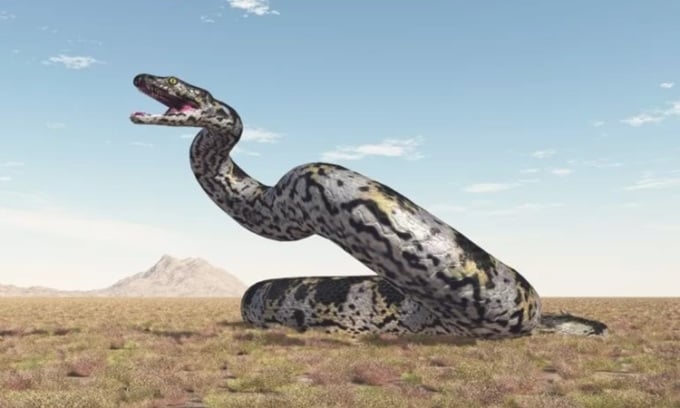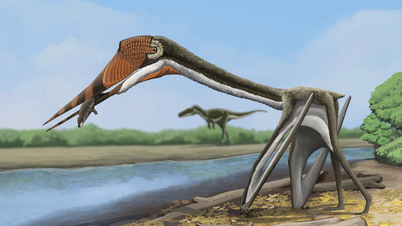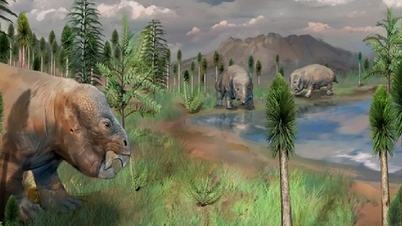India A team of researchers has found the fossil of a giant ancient snake that could be longer than a school bus and weigh a ton.

Vasuki Indicus could compete with Titanoboa for the title of largest snake on the planet. Photo: iStock
Scientists in India have discovered fossils of an ancient snake that could be the largest snake ever to have lived on Earth. The giant snake could grow to 50 feet (15 meters) long, 6.6 feet (2 meters) longer than the current record holder, the Titanoboa. The newly identified species, named Vasuki Indicus , is named after the king of snakes in Hinduism, which was often found wrapped around the neck of one of the most important gods, Lord Shiva, according to Live Science .
The authors of the study, published April 18 in the journal Scientific Reports , believe the fossils came from fully grown adults. A total of 27 fossilized vertebrae from the giant snake were unearthed from the Panandhro Lignite mine in Gujarat state. The fossils date back to about 47 million years ago, during the Eocene period (33.9 to 56 million years ago). They estimated the snake's total body length using the width of its spine and found that V. indicus could have been 11 to 15 meters long, although there is room for error in the estimate.
The researchers used two methods to derive estimates of V. indicus's body length. Both used modern snakes to determine the relationship between the width of a snake's spine and its length, but differed in the data sets they used. One method used data from modern snakes in the South American boa family (which includes boas and pythons), while the other used data from all living snakes. Vasuki belonged to an extinct family of pythons that is distantly related to pythons and anacondas, according to study co-author Debajit Datta of the Indian Institute of Technology Roorkee.
The upper range of the estimate would make V. indicus larger than Titanoboa cerrejonensis, the largest python ever discovered, which lived 60 million years ago and was unearthed in 2002 in northeastern Colombia. V. indicus belongs to the Madtsoiidae group of pythons, which first appeared in the late Cretaceous period (66–100.5 million years ago), in South America, Africa, India, Australia, and southern Europe.
Looking at the position of the ribs attached to the spine, the team speculates that V. indicus had a large, cylindrical body and was primarily terrestrial. By comparison, aquatic snakes tend to have elongated, flat bodies. Because of its large size, the researchers believe that the snake was most likely an ambush predator, taking down its prey by constriction, similar to modern anacondas. According to them, V. indicus thrived in a warm climate with an average temperature of around 28 degrees Celsius. However, the team does not know much about its muscles, how it uses them, or what it eats.
Sunil Bajpai, a vertebrate paleontologist at IIT Roorkee, said the team hopes to analyze the carbon and oxygen in the fossils, which will help reveal more about the diet of V. indicus.
An Khang (According to Live Science )
Source link






![[Photo] Prime Minister Pham Minh Chinh talks on the phone with Singaporean Prime Minister Lawrence Wong](https://vphoto.vietnam.vn/thumb/1200x675/vietnam/resource/IMAGE/2025/5/8/e2eab082d9bc4fc4a360b28fa0ab94de)


























![[Photo] Prime Minister Pham Minh Chinh receives delegation from the US-China Economic and Security Review Commission of the US Congress](https://vphoto.vietnam.vn/thumb/1200x675/vietnam/resource/IMAGE/2025/5/7/ff6eff0ccbbd4b1796724cb05110feb0)


































































Comment (0)